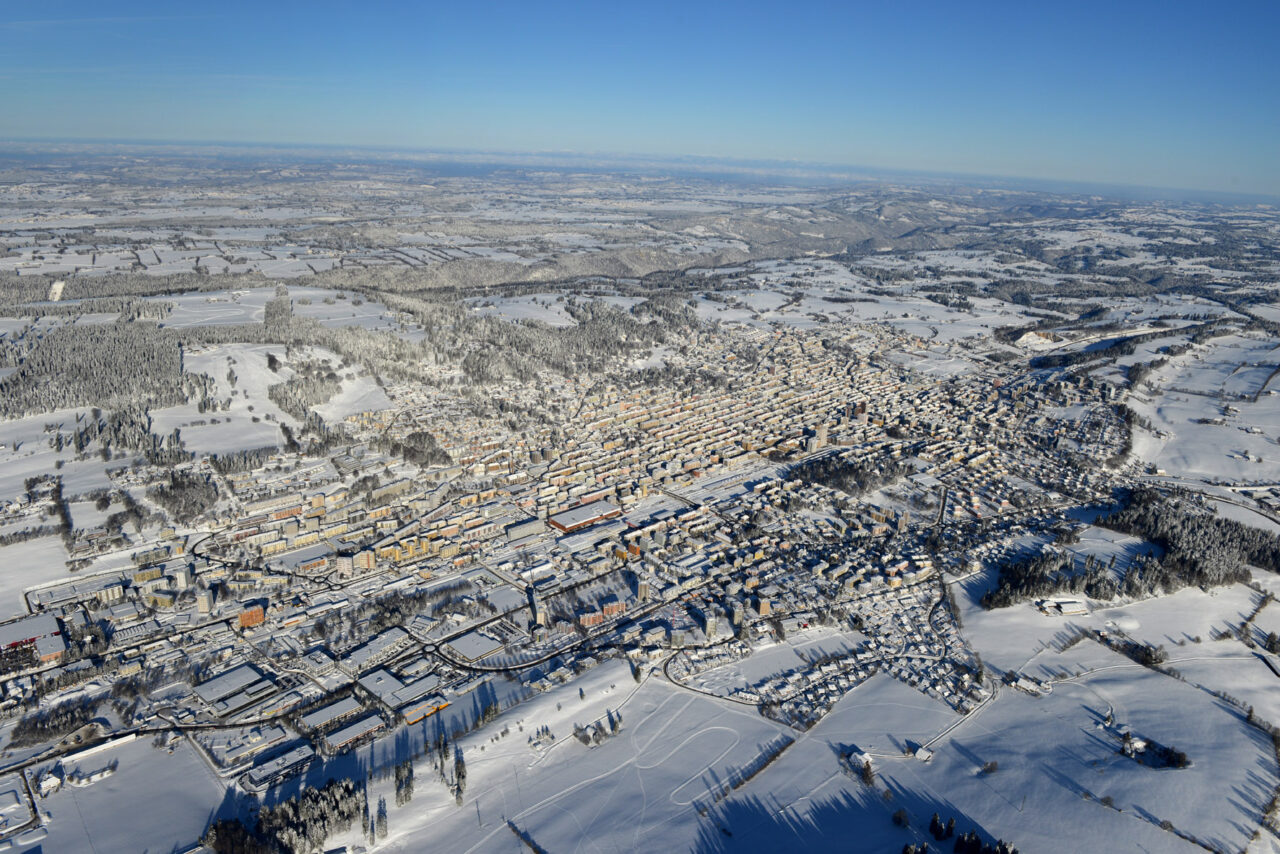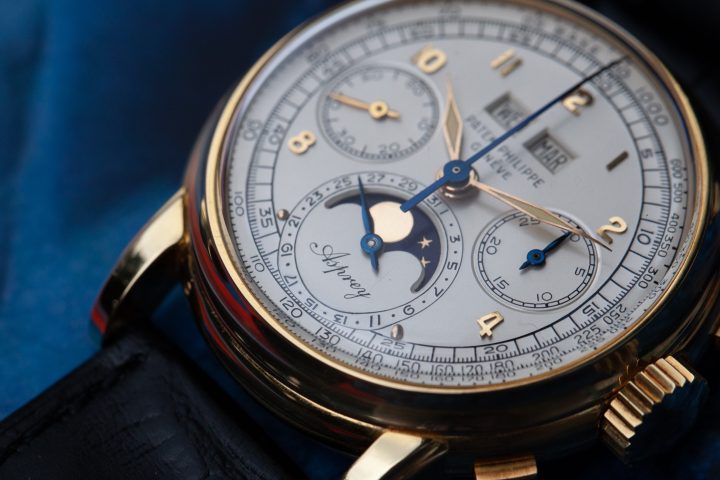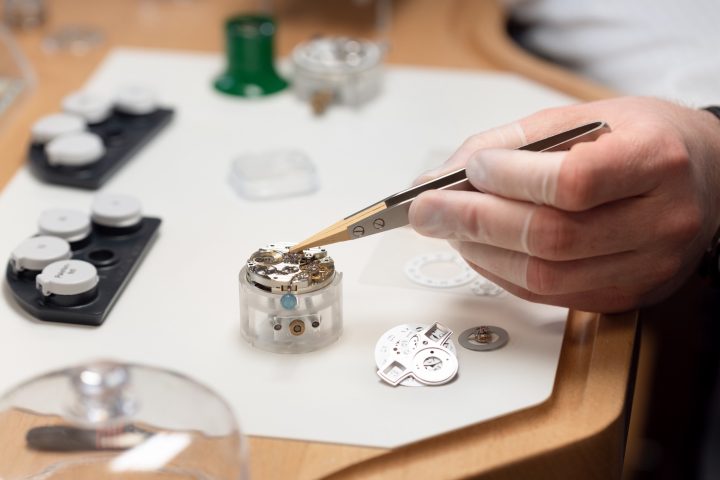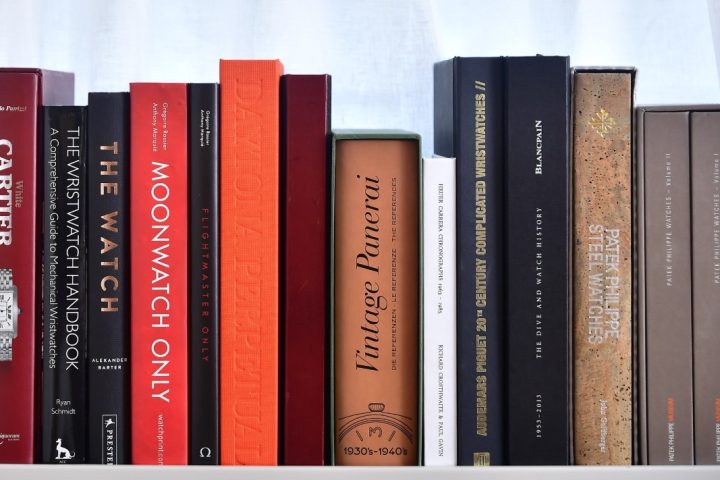La Chaux-de-Fonds! When it comes to watchmaking, the town is as famous as Geneva.
“La T’chaux”, as the locals call it, has a rich history and its watchmaking DNA is deeply rooted in its architecture. For those who have never had the chance to visit the watchmaking city at the top of the Swiss canton of Neuchâtel, allow us to tell you more about this true hub of watchmaking.
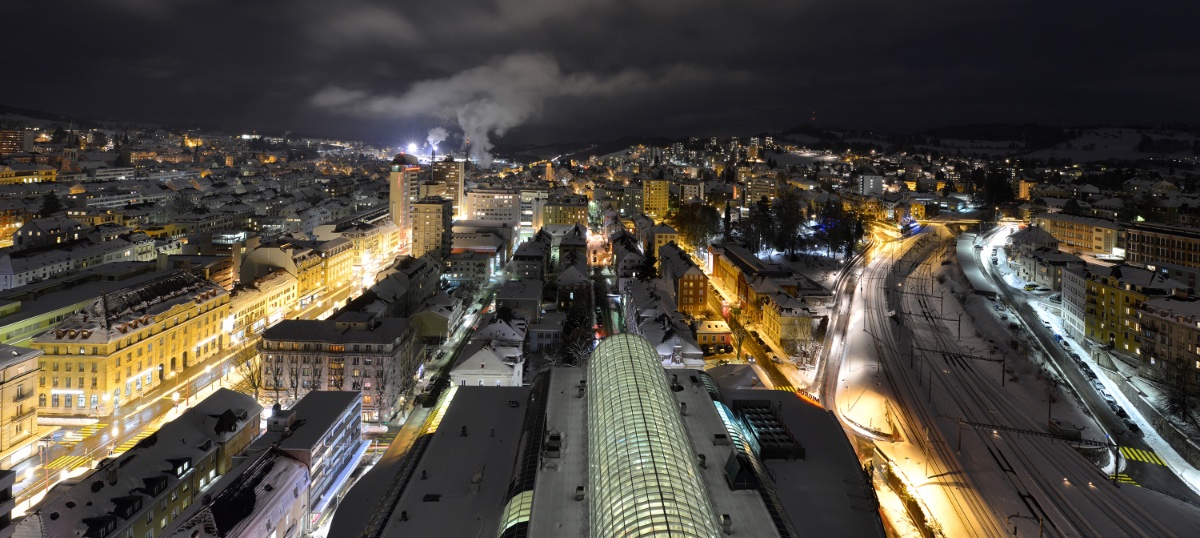
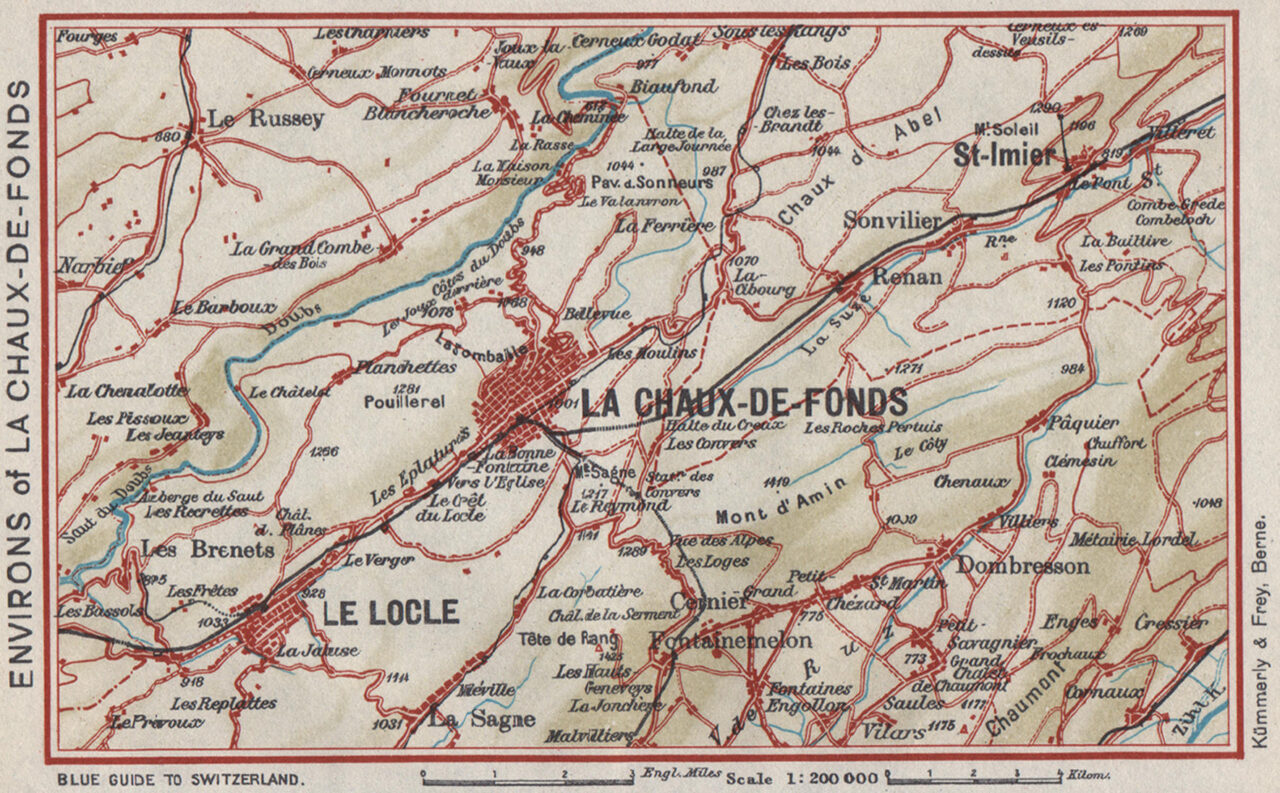
A vintage map of La Chaux-de-Fonds and the surrounding area, circa 1948 © Antiqua Print Gallery / Alamy
First of all, the name “La Chaux-de-Fonds”, which comes from several elements linked to the region’s geography. Firstly, “La Chaux” comes from the Latin word calx, meaning lime (limestone rock). This refers to the limestone soil that is so prevalent in the Neuchâtel Jura, where the town is located. And then there’s “Fonds”, which in the old language meant a deep valley or hollow in the ground. In the case of La Chaux-de-Fonds, this is a high plateau, but on a local scale, it’s a “fond” between the Jura ridges. The word can also refer to land that has been cleared or cultivated.
In other words, La Chaux-de-Fonds literally means something like “the limestone plateau at the bottom”. The name echoes its rural origins; when the village was founded in the mid-17th century, the area was essentially made up of forests, which were gradually cleared for local agriculture.
Historically speaking, the city has experienced several key moments that have left their mark on its architecture.
On May 5, 1794, a devastating fire destroyed a large part of the town. In just a few hours, over 100 wooden houses were reduced to ashes. At the time, La Chaux-de-Fonds was a very rural town, with no real urban organisation like the big cities. Following the fire, the town had to be rebuilt, but instead of making everything identical, the authorities decided to completely rethink the town’s structure. This was a pivotal moment, marking the transition from a mountain town to a modern industrial city; it adopted a checkerboard layout inspired by American cities, with wide, perpendicular streets. This choice was not only aesthetic or functional, but above all met a precise industrial need: to organise the city to optimize watch production.
The east-west streets ensured maximum exposure to natural light, which was essential for watchmaking workshops. At the time, there was neither electricity nor efficient artificial lighting. Daylight was therefore the preferred source of illumination. The other advantage of this regular layout is that it allows better distribution of traffic flows, both for people and goods.
La Chaux-de-Fonds is one of the few cities in the world to have been designed for the specific industry of watchmaking. It is this very specificity and all its components that have earned it its place on Unesco’s World Heritage List.

The grid-like layout was considered an optimal, modern option © Ville de La Chaux-de-Fonds / A. Henchoz
Houses with watchmaking workshops are usually oriented to capture the maximum amount of natural light. Workshops are generally located on the top floor, under the roof, with large south-facing windows. This enabled watchmakers to benefit from the best possible light for their work.
The buildings are often rectangular, aligned with the street. They are imagined and designed with a specific purpose in mind: to be practical. The city is also a skilful blend of styles, from neo-classicism to the Art Nouveau that was the city’s finest hour.
In many of these houses, families lived on the lower floors, while the workshop was on the top floor. This reflects the family organization of work at the time: several members of the same family could participate in watchmaking production. Here, too, practicality came first.
As for watchmaking, the town’s links with the profession go back to the very beginnings of the industry. The story is often told, with varying degrees of veracity and fiction, that winters are long and harsh in the highlands of the canton of Neuchâtel. What’s more, because of its climate and altitude, the region is sorely lacking in arable land. Faced with this situation, the local inhabitants turned to activities that complemented agriculture. Watchmaking thus developed as a winter activity, enabling farmers to subsist during the cold months.
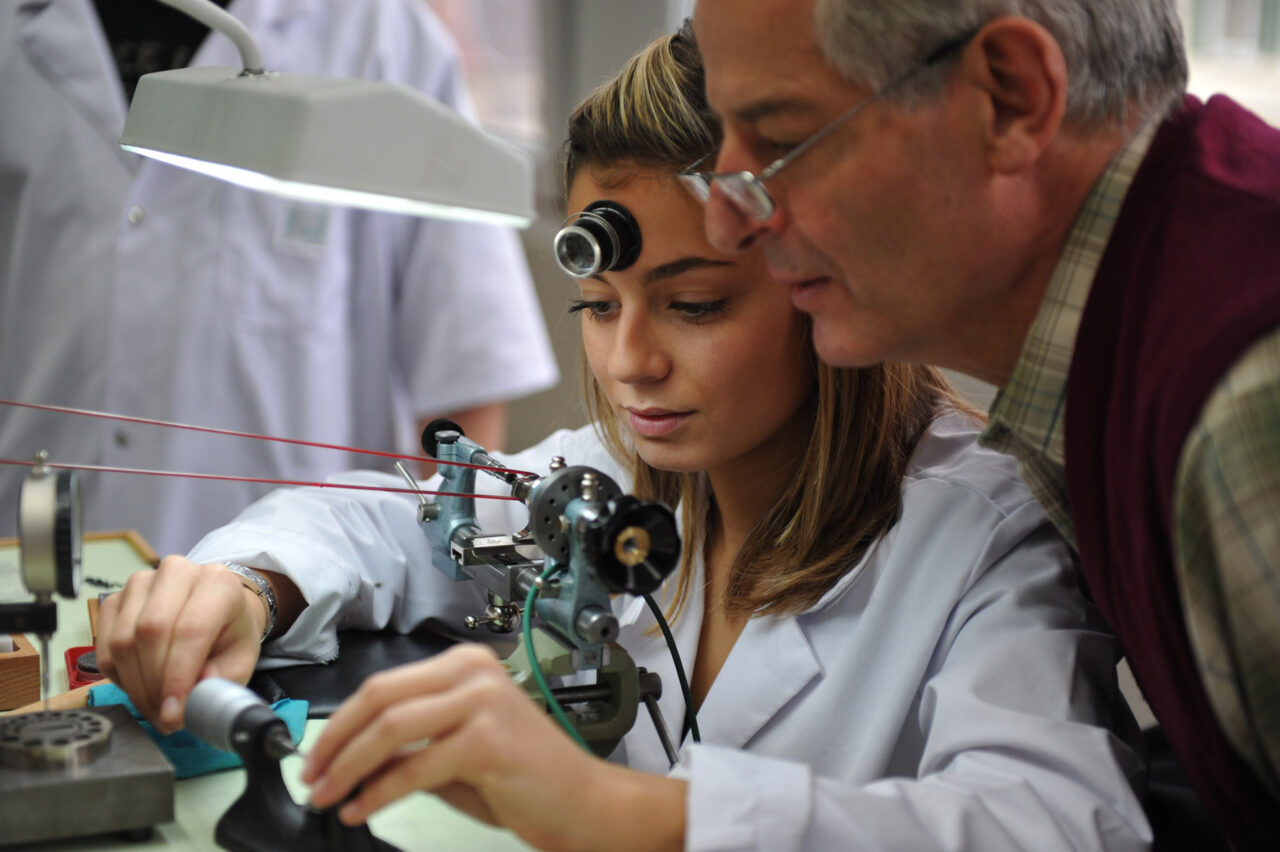
Generations of watchmakers consider La Chaux-de-Fonds their home © Ville de La Chaux-de-Fonds / A. Henchoz
Several factors contributed to the development of watchmaking in La Chaux-de-Fonds. The first is the arrival of Daniel JeanRichard in the late 17th century, considered the father of Neuchâtel watchmaking. Prior to the aforementioned fire that led to the re-invention of the town layout, he had already introduced watchmaking techniques to the region and trained many apprentices. In addition, there was the établissage system, in which each craftsman specialized in making and assembling a part of the watch. This allowed for efficient division of labour and increased production. As a result, the city prospered and established itself as one of the world’s leading watchmaking centres.
It was estimated that, prior to the advent of quartz watches in the ‘70s, almost half of the city’s population was directly employed in watchmaking. That percentage dropped significantly during the so-called Quartz Crisis, but it rose steadily again enthusiasts around the world re-discovered the talent and artistry required for mechanical timepieces. The current estimation is that more than one quarter of today’s population of approximately 38,000 is primarily employed in watchmaking.
Currently, La Chaux-de-Fonds remains one of the world’s most important watchmaking centres, housing either the headquarters or manufacturing facilities for most of the industry’s most prestigious watch manufacturers, supported by numerous suppliers and artisans.
